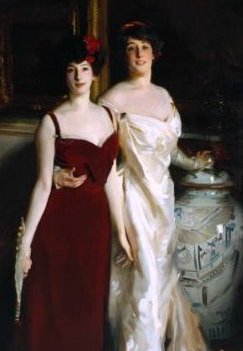Portrait Painting Guide

In this area I aim to offer comprehensive guidance to aspiring artists on how to approach a portrait painting using oils. In doing so I inevitably discuss many concepts that are applicable to more artistic disciplines than portraiture, so hopefully it will be useful to all students of fine art.
I have stressed that this write up is about oil painting because that’s the medium I have settled on. It’s definitely a good idea to try different mediums when you are learning though. Sometimes the quickest way to appreciate the properties of one is to try another. At some stage, however, I suggest you stick to one for a good length of time if you are to really give yourself a chance of improving as an artist.

Devising a literary structure with which to do this is no mean feat. I wanted to avoid the artist feeling that they have been heavily bombarded with lots of useful, but randomly presented, information. If advice is perceived to have been given in no particular order then a student of any discipline is still likely to feel somewhat lost when they first attempt it themselves.
The simplest way to structure artistic guidance might then be to consider each point in the order in which it arises as an artist embarks upon a portrait. Not surprisingly this is an approach that we often see. A progression of photos of a professional artist's painting at various stages culminate in a finished masterpiece with a few comments beneath each reading ‘Then I did this’ and ‘Then I did that’. The trouble of course is that frequently at no point does the painter explain why they did this and didn’t do that. In fact, having tried to devise such as system myself, I can see that the reason for this is partly because it just gets so complicated. Every decision seemed to be based on the outcome of yet another decision and I ended up getting tied in knots.
The message in this is something we all already know - painting is not easy. To suggest that all it takes to complete a professional portrait painting is a series of only approximately six or seven decisions is laughable. I once heard that it takes 10,000 hours of practice to become an expert at anything and on reflection I think that is a fairly accurate estimate. If a few decisions were all there was to it, then it would not take that long at all.
In the end I teased out the problem. Every time I felt the need to deviate from the sequential structure of producing a portrait painting it was always because a decision was needed about one thing – Colour. There is, for example, no point me writing a bite sized, web friendly, chunk of information discussing the use of ‘negative shaping’ and suggesting that you have a go if you haven’t already made the decision about what colour paint to put on your brush!

Summary
My guidance for portrait artists is written in two separate sections. There is a discussion about all things colourful - ‘The Colour Guide’ which should really be read first. Then in ‘Technical Approach’ I take you progressively through the process of painting a portrait. This means that within the ‘Technical Approach’ section there is a sequential structure to every idea I introduce. Whether it is a major point of guidance or a subtle one, they are ordered to try to help the student of art assimilate it. Most crucially of all, I have gone to great lengths to explain why I choose to do something and why you may or may not agree, rather than just prescriptively telling you to do it. In fine art rules are definitely there to be broken, but it is useful to know and understand the rules before you do it!
Copyright Fiona Holt 2024

